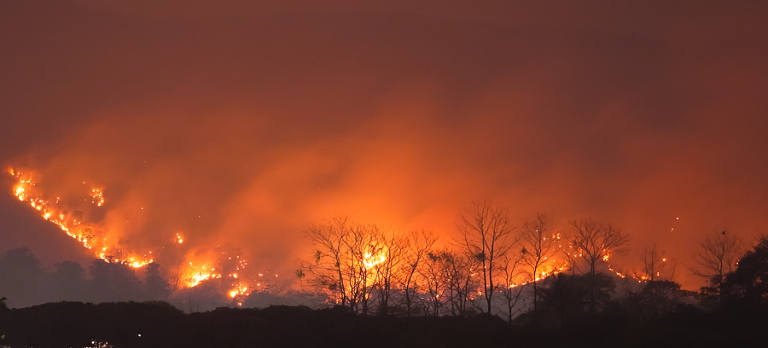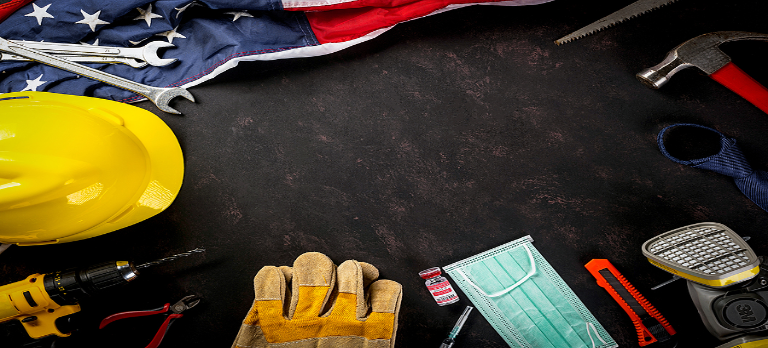Wildfires are increasing in frequency and intensity. Fed by warmer, drier conditions and with the encroachment of cities and suburbs on wildlands, wildfires will increasingly involve not just forested areas but also urban landscapes. A report from the United Nations predicted that the number of wildfires could rise by as much as 50% by 2100. The impact of wildfires is felt far beyond the communities they devastate, costing the U.S. economy as much as $893 billion a year when you include insurance payouts, reduced real estate value, and income loss.
To battle these statistics and to begin to get the upper hand in prevention, communities, first responders, and natural resource organizations are implementing technology-based tactics and techniques. Kevin Sofen, founder of Smart Firefighting, shared some of the technologies being implemented to tame wildfires.
Environment Hardening with Modern Materials and Solutions
There is great truth in Smokey Bear’s famous warning, “Only you can prevent forest fires.” Each of us must do our part to practice fire safety when in nature—putting out campfires completely, refraining from smoking, picking up litter, etc. For those who live in rural areas, this practice must be done daily.
The concept of “home hardening” involves developing properties to be resistant to spreading fire. This can be the spacing of trees and rock-based landscaping, as well as updating roofing and other building elements with fire-resistant materials. Many states and insurance companies offer incentives to homeowners who undertake home-hardening efforts.
Beyond individual efforts, communities are also looking for ways to make cities more fire-resistant. Key infrastructure projects include:
- replacing worn-out electrical wires that are more prone to sparking in the event of damage or outage
- replacing key elements of power grids
- creating smaller microgrids with such clean options as wind or solar that remove the need for long-haul energy transport via exposed wires
Wildfire Prediction with Artificial Intelligence
Sofen noted that Artificial Intelligence (AI) is proving to be a valuable tool in battling natural disasters. Utilizing historical data and real-time feeds of conditions, AI solutions are giving firefighters a heads-up at very early stages of fires and even alerting first responders to dangerous conditions that could lead to a fire.
One solution, Pano AI, uses a network of cameras to continuously gather real-time data on environmental conditions. This data is integrated into a system capable of swiftly identifying changes suggestive of fire outbreaks. The technology can distinguish clouds and fog from smoke and pinpoint the source of the smoke for quick action. The system is currently in use in Washington state and has assisted in several fires, including the Crater Creek fire in the summer of 2023.
AI is proving useful in prediction as well as detection. A pilot program in Turkey utilized AI to predict wildfires 24 hours before combustion with 80% accuracy. The use of AI-powered digital twins is also aiding prediction capabilities, allowing the modeling of how environmental changes will impact wildfire risk. Utilizing imagery and publicly available data, 3D models can help illustrate the key changes and mitigations that can make the biggest impact on fire prevention and remediation.
Finally, AI solutions can scan large amounts of video and imagery and quickly hone in on areas where there are high levels of fuel (tree debris, brush, etc.). Teams can then go in and remediate these areas so that a potential source of fuel is removed.
Quick Action Against Wildfires with the Internet of Things
The wide deployment of cameras and sensors is helping firefighters get to incidents before they get out of control. Several technologies are being used to stop fires when they are small by providing early detection and alerting.
- Fireball International’s satellites detected the 2019 Kincade Fire in California 66 seconds after it started, and the fire was verified within three minutes by the ALERT wildfire system.
- Santa Clara County in California is using sensors to analyze air temperature and particulate data to detect budding wildfires.
- Lightning sensors near Lake Tahoe are being tested to see if they can differentiate high-risk lightning strikes by looking at such things as the charge of electricity, current fuel conditions, and current weather.
Deploying these technologies can be expensive, from buying the product to installation, to ongoing maintenance, to employing tech experts for support. Collaboration is proving to be key to utilizing the available technologies. Sofen highlighted public-private partnerships like Alert West that are creating consortiums to build networks between deployed cameras and sensors and support the ongoing monitoring of environments.
Additional Firefighting Manpower with Unmanned Devices
As much as firefighting and fire management are about being in the right place at the right time, they also require incredible manpower to carry out missions. With first responder and fire management teams stretched thin, wildfire technology is stepping in to fill functional gaps.
Fire professionals are collaborating with the National Oceanic and Atmospheric Administration, the National Aeronautics and Space Administration, and the Department of Defense to use their satellites to glean critical information before, during, and after fires. Satellites, high-altitude aircraft, and sensors can provide critical information about thermal signatures of active fires and provide a view of available fuel in the path of the fire to help first responders know where best to airdrop water or flame retardant. In 2014, 192 satellites had the capability to measure thermal readings and other aspects of fires and today there are 971.
Closer to earth, drones are being used in a variety of ways to supplement the work of firefighters. Drones can provide a faster, less costly way to get situational awareness for crews. Instead of hiking through miles of trails to do routine inspections, teams can deploy drones to gather information on where overgrowth needs to be trimmed and immediately communicate it to teams on the ground that can deploy to complete the job.
Controlled burns are increasingly being used to clear away potential fuel sources for future fires. However, they require a lot of advanced planning and the right weather conditions. As opposed to getting a crew up in a helicopter or deployed on the ground, drones can be used to more quickly set these fires when the conditions are optimal.
Modernizing an Already Modern Practice
Sofen pointed out that firefighting, as we know it today, is a relatively new practice, dating back 100 years or less. However, even with such a “new” field, there is still a lot of resistance to change and a reliance on the “way we’ve always done it.”
Tools like AI and sensors can, in no way, replace people or their years of experience. Rather, it is a supplement that helps save time, minimize reporting, reduce risk, and get firefighters home to their families safely and quickly.
Given the right infrastructure and data, solutions like those highlighted in this report can provide clarity around situational awareness and inform prevention in new ways. Sofen points out that we’ll never outsmart Mother Nature and stop fire completely, but with the smart use of technologies and planning, we can greatly reduce the instances and impact of megafires we’ve seen in the last decade.
We’ll keep watching the use of technology in firefighting and fire prevention to see how new materials, AI, IoT, and unmanned devices converge to make our wildlands and the communities surrounding them safer.
For more information about wildfires and other natural disasters please go to GovWhitePapers.










